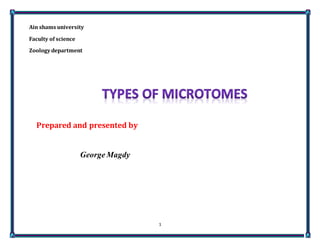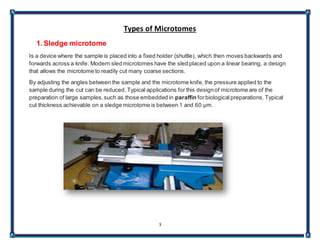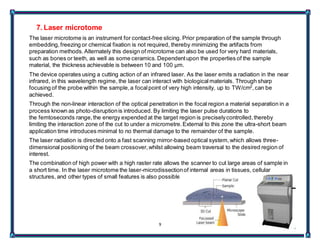The document discusses different types of microtomes used to cut extremely thin slices of materials for examination under microscopes. It describes 7 types of microtomes: sledge microtomes cut thick sections up to 60 μm for light microscopy; rotary microtomes cut sections from 1-60 μm using a rotating knife; cryomicrotomes cut frozen samples in a liquid nitrogen chamber; ultramicrotomes cut extremely thin 40-100 nm sections for electron microscopy; vibrating microtomes cut sections of 30-500 μm for difficult biological samples using a vibrating blade; saw microtomes use a rotating saw to cut hard materials like teeth or bones in sections of about 30 μm; and laser microtomes use








